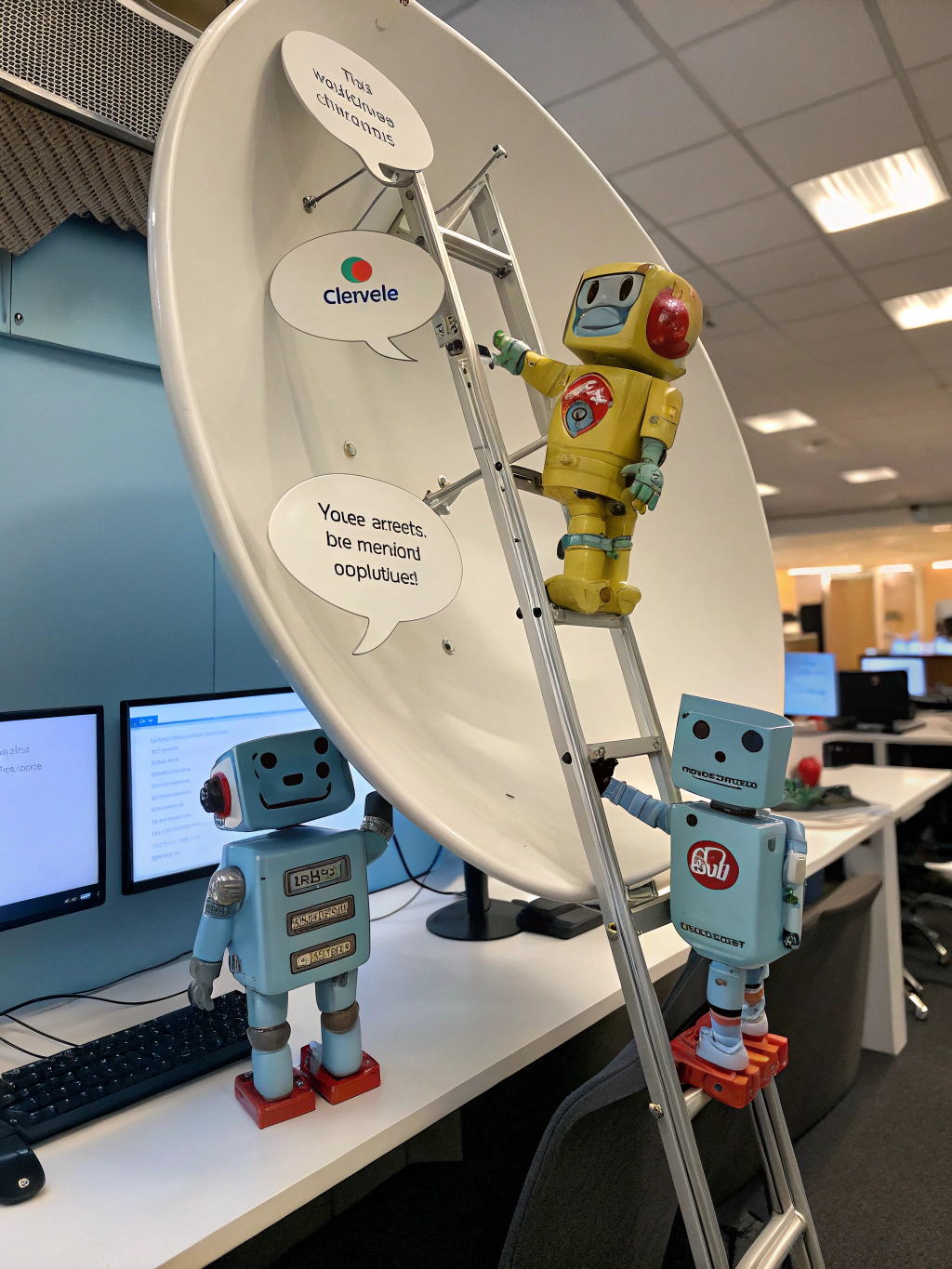How AI-Driven Customer Service Boasts 30% Higher Satisfaction Rates: A Practical Guide

Could AI Be the Missing Piece in Your Customer Service Puzzle?
AI-Driven Are you tired of long wait times, generic responses, and frustrated customers? In today’s fast-paced digital world, providing exceptional customer experiences is no longer a luxury – it’s a necessity. But how can businesses consistently deliver personalized, efficient support without breaking the bank or overwhelming their human agents? The answer, increasingly, lies in AI in Customer Service. AI in Customer Service is rapidly transforming how businesses interact with their customers, offering innovative solutions to enhance satisfaction and boost efficiency. This isn’t a futuristic fantasy; it’s happening now, and understanding its implications is crucial for any organization looking to thrive.
Key Concepts & Trends
Imagine a world where customer queries are addressed instantly, 24/7, with remarkable accuracy. This is the promise of modern AI-powered customer service. Several key concepts and trends are driving this revolution. Chatbot Automation is at the forefront, evolving from simple rule-based scripts to sophisticated AI-powered virtual assistants capable of understanding natural language, resolving complex issues, and even personalizing interactions. Think of it like upgrading from a basic phone directory to a knowledgeable concierge service.
Beyond chatbots, Natural Language Processing (NLP) allows AI systems to understand the sentiment and intent behind customer communications, enabling more empathetic and effective responses. Machine Learning (ML) continuously improves the AI’s performance over time, learning from every interaction and becoming increasingly adept at handling a wider range of inquiries. Another prominent trend is the integration of AI with existing CRM systems, providing agents with real-time customer data and insights to personalize their interactions. Voice AI is also gaining traction, empowering customers to interact with businesses through voice assistants like Alexa and Google Assistant. These technologies are no longer separate entities but are increasingly interwoven to create seamless, omnichannel customer experiences.

Data & Market Insights
The market for AI in Customer Service is booming. According to a recent report by Grand View Research, the global AI in customer service market size was valued at USD 15.8 billion in 2023 and is projected to reach USD 104.7 billion by 2032, growing at a CAGR of 25.4% from 2024 to 2032. This explosive growth is fueled by increasing customer expectations, the rising cost of traditional support models, and advancements in AI technologies.
A Salesforce study found that 77% of businesses believe AI will be crucial for maintaining or improving customer experience. Furthermore, a Forrester report highlights that companies using AI for customer service see an average 20% reduction in operational costs and a 10% increase in agent productivity. The pandemic further accelerated AI adoption as businesses sought scalable and cost-effective solutions for handling increased customer inquiries. This isn’t just a fleeting trend; it’s a fundamental shift in how businesses approach customer relationships.
Smarter Strategies & Alternatives
Implementing AI in Customer Service isn’t simply about deploying a chatbot. A successful strategy requires a holistic approach. Start by identifying key pain points in your existing customer service process – high ticket volumes, long wait times, repetitive inquiries. Then, strategically integrate AI solutions to address these specific challenges.
Consider a phased approach: begin with simple chatbots to handle frequently asked questions, gradually expanding their capabilities to address more complex issues. Combine AI with human agents, creating a hybrid model where AI handles routine tasks and agents focus on more nuanced and sensitive interactions. One alternative to off-the-shelf solutions is building custom AI models tailored to your specific business needs. While this requires more expertise and resources, it can lead to a more personalized and effective solution. For smaller businesses, leveraging low-code/no-code AI platforms can be a more accessible entry point. Remember, the goal is to augment human capabilities, not replace them entirely.
Use Cases & Applications
The applications of AI in Customer Service are vast and varied. E-commerce businesses are using chatbots to provide instant product recommendations and track order status. Financial institutions are leveraging AI to detect fraudulent transactions and provide personalized financial advice. Healthcare providers are using virtual assistants to schedule appointments and answer basic medical questions.
For instance, Sephora’s chatbot helps customers book makeovers, find products, and get beauty tips. Many airlines utilize AI-powered chatbots to handle flight changes, baggage inquiries, and customer service requests. Startups like Ada Support are providing AI-powered customer service platforms to businesses across various industries. The key is to identify areas where AI can automate tasks, personalize interactions, and ultimately improve the customer journey.
Common Mistakes to Avoid
While the potential of AI in Customer Service is immense, there are common pitfalls to avoid. One frequent mistake is over-relying on automation without providing adequate human oversight. AI systems can sometimes misinterpret customer requests or fail to handle complex scenarios, leading to frustration.
Another common error is neglecting data quality and training. AI models are only as good as the data they are trained on. Biased or incomplete data can lead to inaccurate or unfair results. A critical mistake is failing to personalize the AI experience. Generic, robotic responses can feel impersonal and alienate customers. Finally, ignoring ongoing monitoring and optimization is a recipe for stagnation. AI systems require continuous fine-tuning to maintain accuracy and effectiveness.
Maintenance, Security & Long-Term Planning
Maintaining an AI-powered customer service system is an ongoing process. Regular monitoring of performance metrics, such as resolution rates and customer satisfaction scores, is essential. Continuous retraining of AI models with new data is necessary to maintain accuracy and relevance.
Security is paramount. Ensure your AI systems are protected from cyber threats and data breaches. Comply with relevant data privacy regulations like GDPR and CCPA. Scalability is another key consideration. Your AI system should be able to handle increasing volumes of customer inquiries as your business grows. Stay informed about evolving AI technologies and regulatory changes to ensure your systems remain current and compliant.
Summary & Key Takeaways
AI in Customer Service is no longer a futuristic concept—it’s a present-day necessity for businesses striving to deliver exceptional customer experiences. Chatbot Automation is leading the charge, offering 24/7 support, personalized interactions, and cost-effective solutions. By strategically implementing AI, combining it with human expertise, and prioritizing data quality and security, businesses can transform their customer service operations and gain a significant competitive advantage.
Ready to explore how AI can revolutionize your customer interactions? Share your thoughts on the future of AI in customer service in the comments below! Or, AI in Customer Service to delve deeper into the latest trends.
FAQs
Is it too late to invest in AI for customer service?
Absolutely not! The market is still in its early stages of growth, and the potential returns are significant.
How can small businesses use AI in customer service?
Start small with basic chatbots for FAQs and gradually expand their capabilities. Several affordable and user-friendly AI platforms are available.
What tech stacks scale best for AI-powered customer service?
Cloud-based platforms like AWS, Azure, and Google Cloud offer excellent scalability for AI solutions. Integrating with existing CRM systems is also crucial.
Share this content:














Post Comment